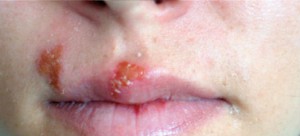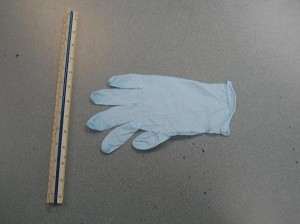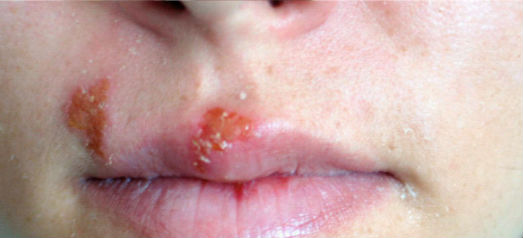Also known as herpes simplex, cold sores are viral infections affecting the lips, mouth and the nose.
The infection affects the skin and the nervous system as well. The infection is caused by the virus, herpes simplex 1 and it often does not lead to any potentially life-threatening or severe effects.
The virus infects a certain region of the skin or the nervous region and remains inactive until it is triggered to erupt—leading to the formation of cold sores. The trigger has not been recognized yet, but many people report it to being physical or emotional stress, sunlight, hormonal changes due to menstruation, pregnancy or menopause, illnesses, fever and certain foods and medication.
Symptoms
- Burning, itching or tingling sensation around the affected area i.e. the mouth or the nose
- After a few hours, red spots begin to appear in the affected area
- The red spots develop into fluid filled blisters
- Sometimes blisters may be close enough to burst
- After the blisters burst, the clear, sticky liquid will harden quickly forming a crust
The blisters caused by cold sores are very contagious and should therefore not come in contact with the eyes or other areas of the body. People recover from minor outbreaks within 2 weeks and are usually not left with any scars.
Treatment
There is no such treatment that may cause the infection to recover faster, but the following treatment steps may help you relieve the symptoms of the condition:
1. Safety first. You do not want to contract the infection, therefore make sure you wear the necessary safety equipment, especially gloves.

2. Cold sores are very contagious, therefore:
- Do not touch anyone
- Do not share food or drinks with anyone
- Do not kiss anyone
- Wash your hands every time after you touch your cold sore
- Avoid touching your genitals or eyes after touching your cold sore. These areas are more susceptible to be affected by the virus than other regions.
3. Antibiotics have no effect on viral infections
- Since cold sores are caused by a virus, antibiotics are of no use and will not cause any effects
- Keep the cold sore moist by applying petroleum jelly or lip balms
- Keeping the sore moist will prevent it from cracking and thus, bleeding
- Wash your hands and make sure you do not use any reusable applicators such as sticks or spoons
4. Seek medical attention if the cold sore does not heal after 10 days
Prevention and tips
- To prevent the virus from becoming active during its phase of dormancy, try to identify and prevent exposure to certain triggers that may allow it to burst. Stress and brightly sunlight are some common examples of triggers.
- Ice relieves the pain caused due to cold sores. You can also eat popsicles to ease the pain.
Cold Sores and First Aid Training
Although cold sores are rarely mentioned in first aid training, they are another reason why candidates should use pocket masks and barrier devices whenever available when providing artificial respiration and CPR.
Video to Related to Cold Sores

